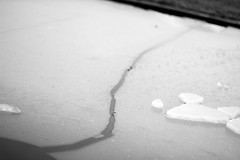When it comes to tension, suspense and surprise, it’s very hard to find your own weaknesses. Or, sometimes, to admit them.
Hi. I’m Jordan, and sometimes I write boring crap. And I leave it in. Even though people tell me it’s boring.
I’m trying to get better. (Hence this series.) But the more I work on specific areas in my writing, the more I realize I need help, and I may always need help. I think I’m probably not alone. Most of us allow at least a little indulgence as we’re drafting—words, lines, paragraphs or scenes that don’t necessarily move the story forward. And then sometimes we get a little too attached.
 The fact is, when you’re still in love with your characters and your story, you’re more than willing to read the scenes that don’t really move the story along. One way to counteract this is to set the story aside. Yes, we’re always told to do this, and this is a big reason why. Set it aside for 6 months to a year and give yourself some distance from the work.
The fact is, when you’re still in love with your characters and your story, you’re more than willing to read the scenes that don’t really move the story along. One way to counteract this is to set the story aside. Yes, we’re always told to do this, and this is a big reason why. Set it aside for 6 months to a year and give yourself some distance from the work.
I am so not that patient. Once I’ve patched up the glaring holes and inconsistencies I know I’ve created, I’m willing to let my work go to one or two of my beta readers to make sure there aren’t any big structural/common sense/plot holes I missed. I’m okay with them taking a few months—but the minute I get their notes back, I’m ready to jump in again. That’s usually not long enough. (I also have a fairly good memory.)
Those beta readers and critique partners help in other ways, too. As far more impartial readers who want to help you make your story better (we hope), they have a vested interest in helping you eliminate all the weaknesses. They aren’t as attached to your story and your characters, so they are better at identifying places that don’t do much to move the story forward—the parts where their attention starts wandering. (Also helpful: the parts where they don’t know what you’re talking about.)
Tomorrow we’ll look at what you can do to find those weak tension points yourself—once you’re ready to let go of those things you love so much.
What do you think? How do you get help in identifying which parts drag?
Photo credit: Big Eagle Owl
